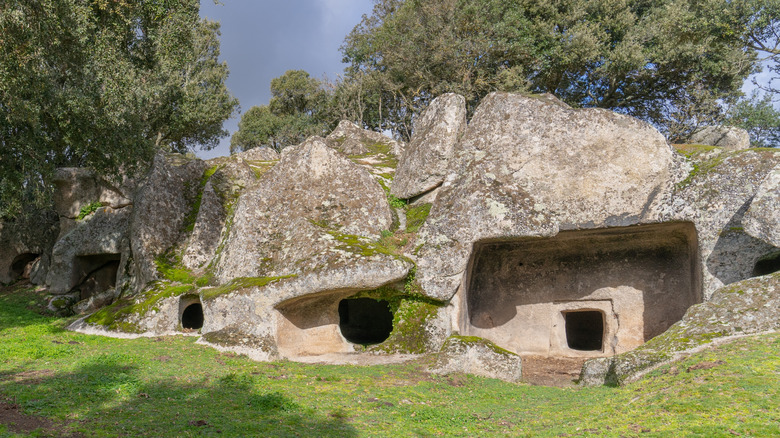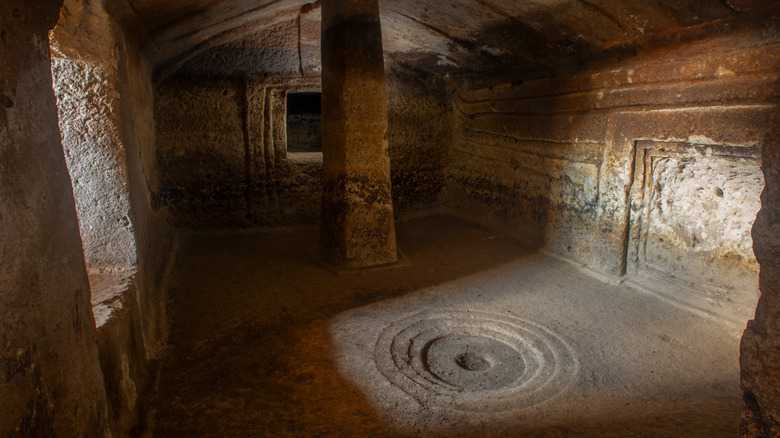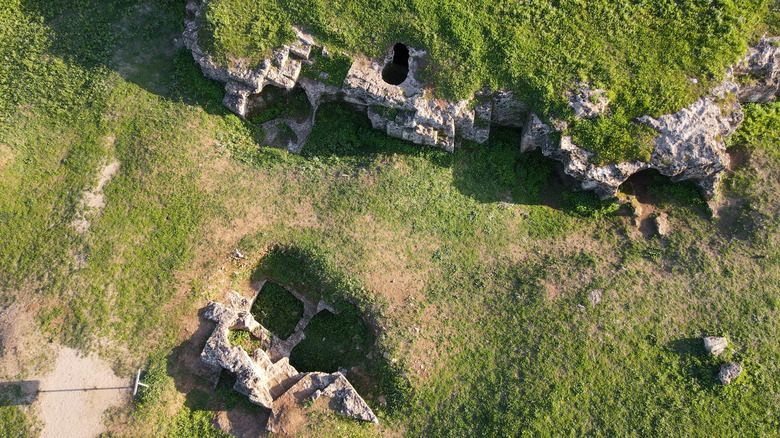
Sardinia's international star keeps rising. Each year, more and more travelers continue to flock to the Mediterranean island's hotspots, from the glamorous designer boutiques of Porto Cervo to the sapphire waters and limestone cliffs of Cala Goloritzè, hailed as one of the world's best beaches, and the more intimate La Maddalena island, home to some truly spectacular white sand beaches. Yet, beyond the Instagram-perfect postcards and luxury resorts, lies a side of the island that hardly anyone talks
about -- perhaps because it's less flashy, more mystical, or simply because it's off the beaten path of the usual tourist circuits.
This is the Sardinia of the UNESCO World Heritage domus de janas, or "case delle fate" (in English, "houses of fairies"), recently added to the storied list of cultural sites in July 2025. A name that perfectly captures the interplay of the earthly and the mythical, the tangible and the unseen that have long shaped -- and, to a certain extent, are still shaping -- the local culture. These mysterious rock-hewn chambers, carved into the very heart of the island's rugged inland landscapes over 5,000 years ago (some are even dating back to the 5th century B.C.), were indeed believed to be the houses of tiny spirits, somewhere between fairies and witches, benevolent to those who respected them, yet capable of mischief or punishment if offended.
As it turns out, the domus originally served as funerary caves where the dead were laid to rest along with their belongings, intended to accompany them on their journey to eventual resurrection. While their real function might be far less magical than the legend (which, in fact, only emerged later in local lore), their hypnotic allure makes them a must-see for anyone wanting to truly grasp the island's layered history.
Read more: The Most 'Overtouristed' Places In Europe
The Historical And Cultural Value Of The Domus De Janas

For decades, the domus de janas remained largely off the beaten path, known mostly to archaeologists and a handful of local enthusiasts. That changed recently, when they gained international recognition through their inclusion in the UNESCO World Heritage list. This marked Italy's 61st inscription, further cementing its status as the country with the highest number of World Heritage Sites. It is also the second UNESCO cultural site on the island, alongside the Su Nuraxi archaeological complex in Barumini, in the province of South Sardinia. Architecturally, the domus de janas offer an extraordinary glimpse not only into how Sardinia's earliest communities related to death but -- perhaps more interestingly -- into how they conducted their day-to-day lives. The funerary chambers often reproduce the layout of neolithic dwellings, complete with carved features resembling wooden beams and recessed niches, showcasing the remarkable craftsmanship of the time. One of the most fascinating aspects is the presence of symbolic elements, such as decorative portals believed to mark the transition to the afterlife, as well as carved motifs like bull horns and concentric circles, both of which were thought to offer spiritual protection.
While visiting all of the island's domus de janas is logistically a near-impossible feat -- they are over 3,500 in total, mainly concentrated along Sardinia's central inland corridor, between Sassari and Nuoro, as well as in the northwestern coastal area near Alghero -- some sites stand out for their exceptional preservation, artistic detail, or scenic setting.
Where To See The Most Remarkable Domus De Janas

A smart way to start exploring one of the Mediterranean's largest and most fascinating collection of funerary sites is to focus on a corner of Sardinia at a time and dive deep. This way, you can soak in the ancient wonders without running yourself ragged, all while sneaking in some city charm or a beach break you won't want to miss. Starting in the northwest, near Alghero, in an area known as I Piani, the domus de janas at Anghelu Ruju is one of Sardinia's most significant hypogean complexes. It includes 38 underground tombs, accessed either via a vertical shaft (a "pozzo") or a sloping corridor (also known as "dromos"). The site is open Monday to Sunday, with access granted upon payment of a small €5 fee (about $5.50). Take advantage of the audio guides (available on-site) and guided tours (available only for groups of over 20 people) to fully appreciate the site's key role in the region's ancient burial traditions.
Less than a one-hour drive away, and you will arrive at the domus de janas at Sant'Andrea Priu in Bonorva. The site features more than 20 hypogean tombs, but the highlight is undoubtedly the "Tomb of the Chief." This masterpiece is known for its architectural complexity -- 18 rooms spread across two different tiers and connected by a maze of corridors -- and its fascinating second life as a Byzantine-era Christian chapel.
Further south, near the village of Villaperrucccio, is the Necropolis of Montessu, conveniently located just around a one-hour drive from the island's largest city, Cagliari, a majestic Mediterranean seaside paradise featuring unmatched food and beaches. It represents one of the most remarkable -- and one of the few -- testaments of pre-Nuragic funerary architecture in the southern portion of Sardinia.
Ready to discover more hidden gems and expert travel tips? Subscribe to our free newsletter for access to the world's best-kept travel secrets.
Read the original article on Islands.













